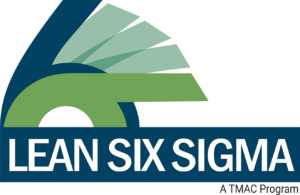The Power of Small: Developing People Through the LSS Yellow Belt
Becoming a LSS Green Belt or Black Belt takes a major investment of time and money. It starts with 2-4 months of training followed by additional months of leading a project team, collecting and analyzing data, determining root causes, running a pilot, and implementing a solution. The results speak for themselves, with sizeable impacts to cost, quality, and delivery.
Most people aren’t ready to dedicate this much time and effort. What if you could develop knowledge of the DMAIC Process, some commonly used tools, and gain buy-in for your Continuous Improvement Program, all with an investment of just a few days?
The LSS Yellow Belt can accomplish these goals and much more. A YB offers great benefits for a small investment of time and money. Recently I taught TMAC’s 2-day LSS Yellow Belt workshop for a local company. This experience reaffirmed a core truth: When leaders focus on developing their people, great things happen. Witnessing the energy and enthusiasm of participants as they learn to solve problems scientifically, while embracing experimentation and even failure, is one of the most rewarding aspects of this journey.
In this post, I’ll reflect on Yellow Belt objectives, the dynamics of teaching it, and the profound impact it can have on organizations.
The Purpose of Yellow Belt Training
The Yellow Belt is designed to provide a foundational understanding of the DMAIC (Define, Measure, Analyze, Improve, Control) process and introduce participants to some basic LSS tools. While many may view a Yellow Belt as just a starting point, this workshop can create a ripple effect across teams and organizations.
Key Goals of Yellow Belt Training:
- Introduce the DMAIC Framework: Participants learn a structured methodology for identifying and solving problems.
- Demystify Lean Six Sigma Tools: By breaking down tools into practical, accessible concepts, employees feel empowered to apply them in their work.
- Foster a Collaborative Mindset: The YB encourages teamwork across all levels, highlighting how LSS is not confined to specialists or leadership—it’s for everyone.
- Build a Critical Mass: Training large groups (up to 25 participants per workshop) creates a network of LSS-savvy employees who can collectively drive cultural change.
Who is the target audience for Yellow Belt training? Most people assume it is just for frontline staff. But that’s selling it short. The YB workshop is equally valuable for supervisors, managers, and executives. Even better, we recommend YB workshops with participants from various departments and levels. When mixed groups participate in a session, it reinforces the idea that continuous improvement is everyone’s responsibility, regardless of rank or title.
Applications of Yellow Belt Training
Different organizations leverage Yellow Belt training in unique ways based on their goals:
- Preparing Employees for LSS Teams: Many companies use the YB as an introduction for frontline staff, equipping them to contribute meaningfully to larger LSS projects.
- Independent Problem Solving: Some companies expect Yellow Belts to execute small-scale projects within their areas. At TMAC, we advocate pairing Yellow Belts with a coach (a Green Belt or Black Belt) to ensure success.
- Identifying Future Leaders: By observing participants’ engagement and aptitude during training, organizations can identify potential candidates for more advanced roles such as Green Belt (GB) or Black Belt (BB).
Engaging Through Simulation
We have found the single best way to engage participants is through a hands-on simulation. At TMAC, we use the Sigma Station simulation, where students take on several roles in an order fulfillment process with many inefficiencies and problems.
This scenario immerses participants in a relatable and dynamic problem-solving experience in which they get a chance to apply the DMAIC Process to reduce errors, increase on-time delivery, improve customer service, and grow company profits. The simulation is run three times, once to collect Baseline Process Data, a second time to get Pilot Process Data (a trial of the solution), and a final time to gain Improved Process Data.
Tools and Techniques That Drive Success
The Yellow Belt emphasizes practical tools participants can apply immediately including:
- Problem Definition: Establishing clear problem statements ensures alignment and focus from the outset.
- Project Charters: These serve as roadmaps, outlining objectives, scope, and team roles.
- Voice of the Customer (VOC): Understanding customer needs provides a foundation for meaningful improvements.
- Process Mapping: Visualizing workflows highlights inefficiencies and opportunities for change.
- Root Cause Analysis: Techniques like the 5 Whys and fishbone diagrams dig deep into underlying issues.
- Operational Definitions and Metrics: Establishing clear, measurable criteria fosters consistency and accountability.
- Control Charts and Visual Controls: These tools ensure sustained improvements by providing real-time feedback.
The Broader Impact of Yellow Belt Training
While the technical skills taught in the Yellow Belt are invaluable, the cultural transformation it drives is equally significant. Here’s how organizations benefit:
1. A Culture of Continuous Improvement:
Yellow Belt training instills a mindset of curiosity and experimentation. Employees learn to question the status quo and seek better ways of doing things, creating a ripple effect throughout the organization.
2. Breaking Down Silos:
By including participants from diverse roles and departments, the Yellow Belt fosters cross-functional collaboration. Employees gain a deeper understanding of each other’s challenges, paving the way for more cohesive teamwork.
3. Empowered Employees:
Participants leave the course with practical tools and newfound confidence. This empowerment often translates to greater job satisfaction and a stronger sense of ownership.
4. Leadership Development:
Yellow Belt training provides a platform to identify future leaders. Those who excel often move on to more advanced LSS roles, driving even greater impact within their organizations.
Reflections and Lessons Learned
My greatest takeaways in teaching this workshop comes from observing how the learning process unfolds. Many participants approach the training with skepticism or uncertainty, especially if they’re unfamiliar with Lean Six Sigma. However, as the workshop progresses and they begin to apply the tools, a visible transformation occurs. Participants start to see their work through a new lens, and the excitement is palpable.
I also observe the power of storytelling in making concepts relatable. The Sigma Station simulation provides a tangible, engaging way to connect abstract tools to real-world scenarios. This hands-on experience not only reinforces learning but also makes it enjoyable.
Conclusion
Teaching the Yellow Belt is a powerful reminder that developing people is at the heart of organizational success. While technical tools are important, the real magic happens when employees feel empowered to make a difference. By investing in training like Yellow Belt, companies create a foundation for innovation, collaboration, and sustained growth.
At TMAC, we believe in the potential of every individual to drive change. Whether they’re on the frontline or in the C-suite, Yellow Belts leave equipped to make meaningful contributions. And as they do, they not only improve processes but also inspire others to join the journey toward excellence.



